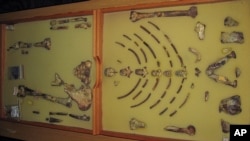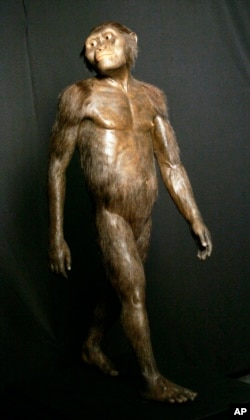Lucy, perhaps the most famous human ancestor, appears to have died after having fallen from a tree, according to a new study of her fossilized bones.
The Australopithecus afarensis, which walked upright, lived in Africa between three- and four-million years ago. Her partial skeleton was unearthed in 1974.
Some experts disagree with the conclusion, arguing instead that her bones were broken after the young adult hominid died.
Lead author John Kappelman told The Washington Post there were some cracks that appeared to have happened post mortem, but there were also apparent compression fractures likely cause by some kind of impact.
Researchers reached their conclusions after extensive X-ray scanning of the skeleton over 10 days when they were able to borrow the skeleton, which is usually kept in Ethiopia.
"We scanned nonstop, 24/7, for 10 days," Kappelman, a University of Texas at Austin anthropology and geological sciences professor, told the Post. "We were exhausted. I was happy to see her come, but I was happy to see her go."
"Orthopedic surgeons see these breaks day in and day out all over the planet," Kappelman said. He's had several specialists take a look at Lucy's big break.
"To the person, it's not like, 'Oh, you know, there's a chance.' They say, 'This is what it is; we see it in our practice all the time.' We have been able to demonstrate that these are matches to what is widely seen in the literature in patients recovering from a fall," he said.
But some experts are dubious.
"I've worked in eastern Africa at these sites for many years, and there's hardly a fossil out there that doesn't have damage like Lucy has," said William Kimbel, director of the Institute of Human Origins at Arizona State University, during an interview with The Washington Post.
"I just don't buy it," said Kimbel, who was not involved in the research.
The study was conducted by researchers at the University of Texas at Austin and appeared in Monday’s issue of the journal Nature.










